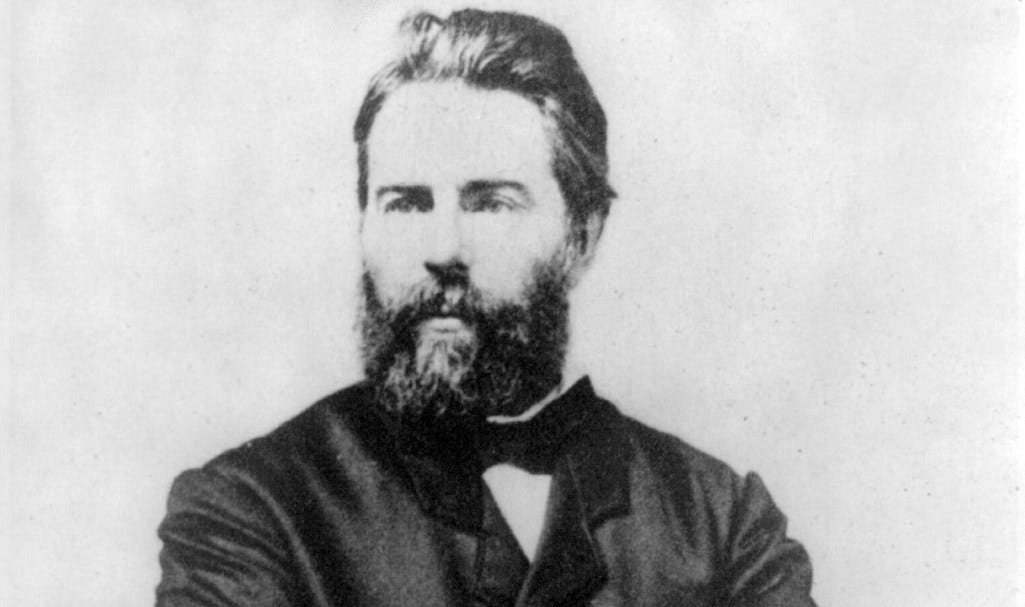Hello readers!
Welcome to our group reading of Herman Melville’s epic seafaring story. This week we’re reading Chapters 1-7 and your first recap will come next Sunday.
Published in 1851, Moby-Dick is the classic literary example of a work of art that goes unappreciated in its creator’s lifetime.
Inspired by the real-life story of the Essex whaler, and drawing on his experience as a sailor in the early 1840s, Melville wrote his door-stopping masterpiece in just 18 months. (I highly recommend Nathaniel Philbrick’s book In the Heart of the Sea, which tells the story of the Essex in full.)
When it hit shelves in 1851, it received some favorable reviews from critics, but not enough to influence the reading public. The era was instead ruled by Charles Dickens, Henry David Thoreau, and Nathaniel Hawthorne, among others. Interestingly, Melville was part of the same transcendentalist circle as those last two — in fact, you’ll note that Moby-Dick is dedicated to Hawthorne.
Sadly, by the time Melville died in 1891, Moby-Dick was no longer in print and seemingly destined to fade out of American literary memory. It wasn’t until two decades later that scholars began to revisit and reassess his work. At that point, the likes of D. H. Lawrence, Lewis Mumford, and William Faulkner (all well-known authors and thinkers of that era) began to sing Melville’s praises. Since then, for the last 100+ years, Moby-Dick has not been out of print and has become among the most popular picks for the elusive title of Great American Novel.
Reading Moby-Dick in 2025
Keep reading with a 7-day free trial
Subscribe to The Big Read to keep reading this post and get 7 days of free access to the full post archives.


